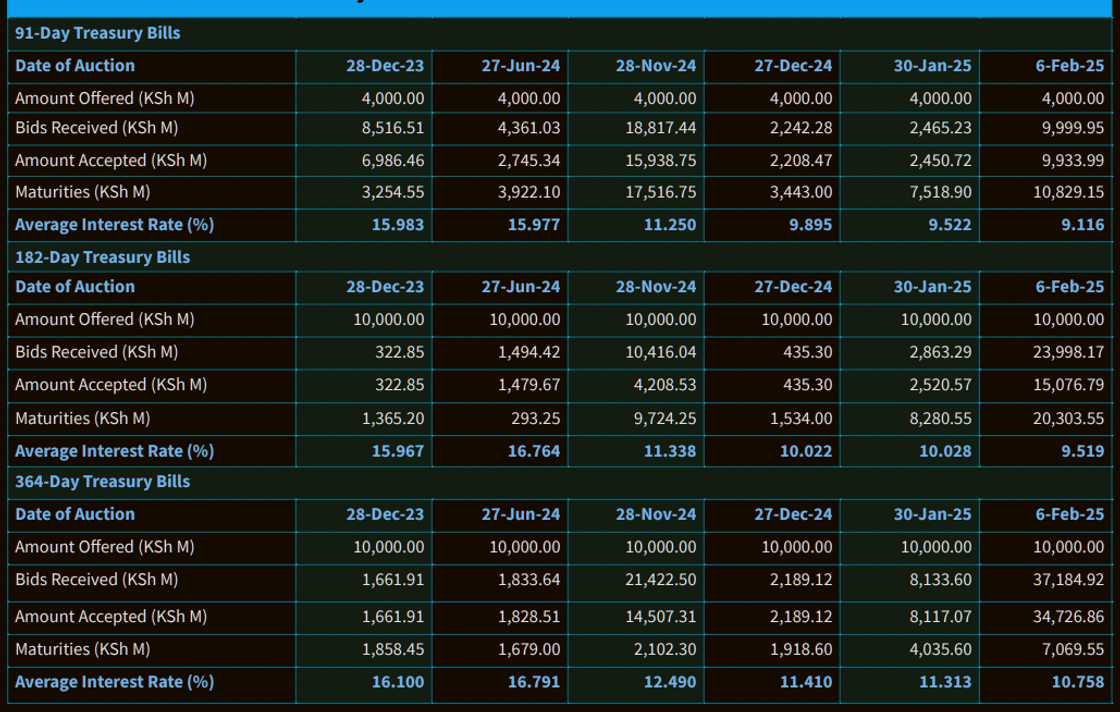- The Central Bank of Kenya has lowered interest rates on short-term Treasury bills, while keeping interest rates on longer-term bonds unchanged.
- According to CBK auction data, there has been a substantial decline in Treasury bill rates, with the 91-day bill rate decreasing from 15.98% in December 2023 to 9.12% in February 2025.
- The move is consistent with the government's plan to reduce short-term borrowing costs and encourage long-term securities.
Nairobi, Kenya – The Central Bank of Kenya (CBK) has announced lower interest rates on short-term treasury bills with the aim of encouraging investors to move their investments towards longer-term domestic bonds.

The goal of the shift is to ease financial pressures and establish a more stable and long-term framework for the government's debt repayment schedule.
Decline in interest rates for Treasury bills
Recent data from the Central Bank shows that interest rates on short-term Treasury bills have decreased across various time frames.
The average interest rate for the 91-day Treasury bill decreased from 15.98% in December 2023 to 9.12% in February 2025. The 182-day Treasury bill interest rate dropped from 15.67% to 9.52% over the same period. The 364-day Treasury bill interest rate also declined, from 16.10% in December to 10.75% in February 2025.

This downward trend implies that the CBK is intentionally reducing the cost of short-term loans while making long-term investments more appealing to investors.
Notably, the interest rates on government bonds are quite stable, ranging between 15.68% and 16.30%. The most recent government bond auctions in January attracted interest rates of 14.21% and 15.68%.

Domestic debt portfolio
In the latest draft of the 2025 Medium-Term Debt Management Strategy (MTDS), the Treasury expressed concerns that Kenya is facing a high risk of debt distress, highlighting that the current value of public debt stands at 63.0% of GDP, exceeding the recommended threshold of 55% of debt to GDP.
The domestic debt with a 4- to 10-year maturity period, as well as debt with less than one year to maturity, increased by 18.6% due to the National Treasury's increased use of short-term debt instruments.
The redemption profile shows that 18.6 percent of domestic debt will mature by June 2025, primarily due to short-term government securities, specifically treasury bills, that are set to expire.
The Treasury department plans to consider various options for Liability Management Operations (LMOs) in order to extend the repayment period of existing debts and thereby reduce upcoming debt maturity dates.
This implied the need to reduce the stock of short-term domestic loans and increase the uptake of long-term securities in order to provide the government with a longer timeframe before the securities mature.
